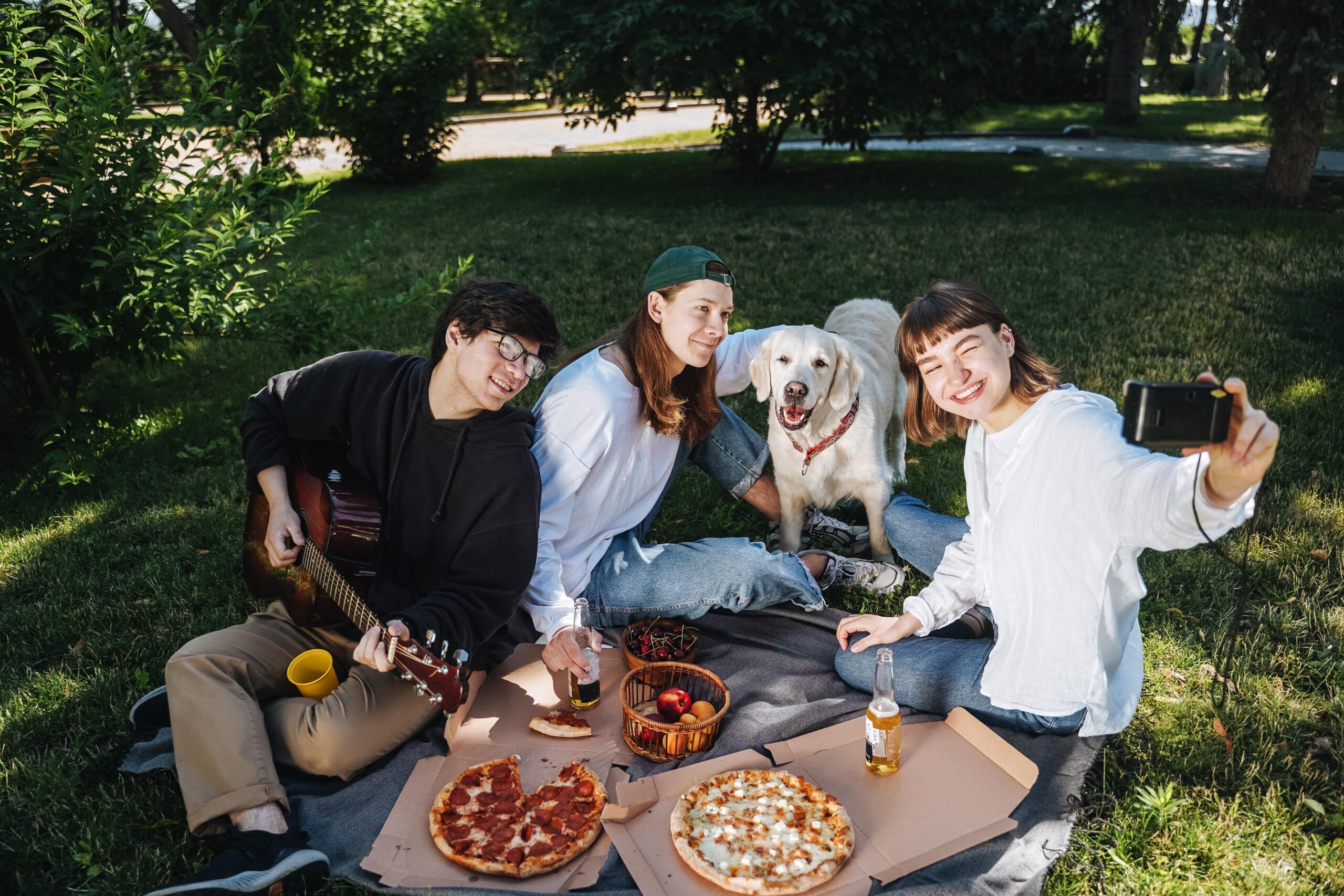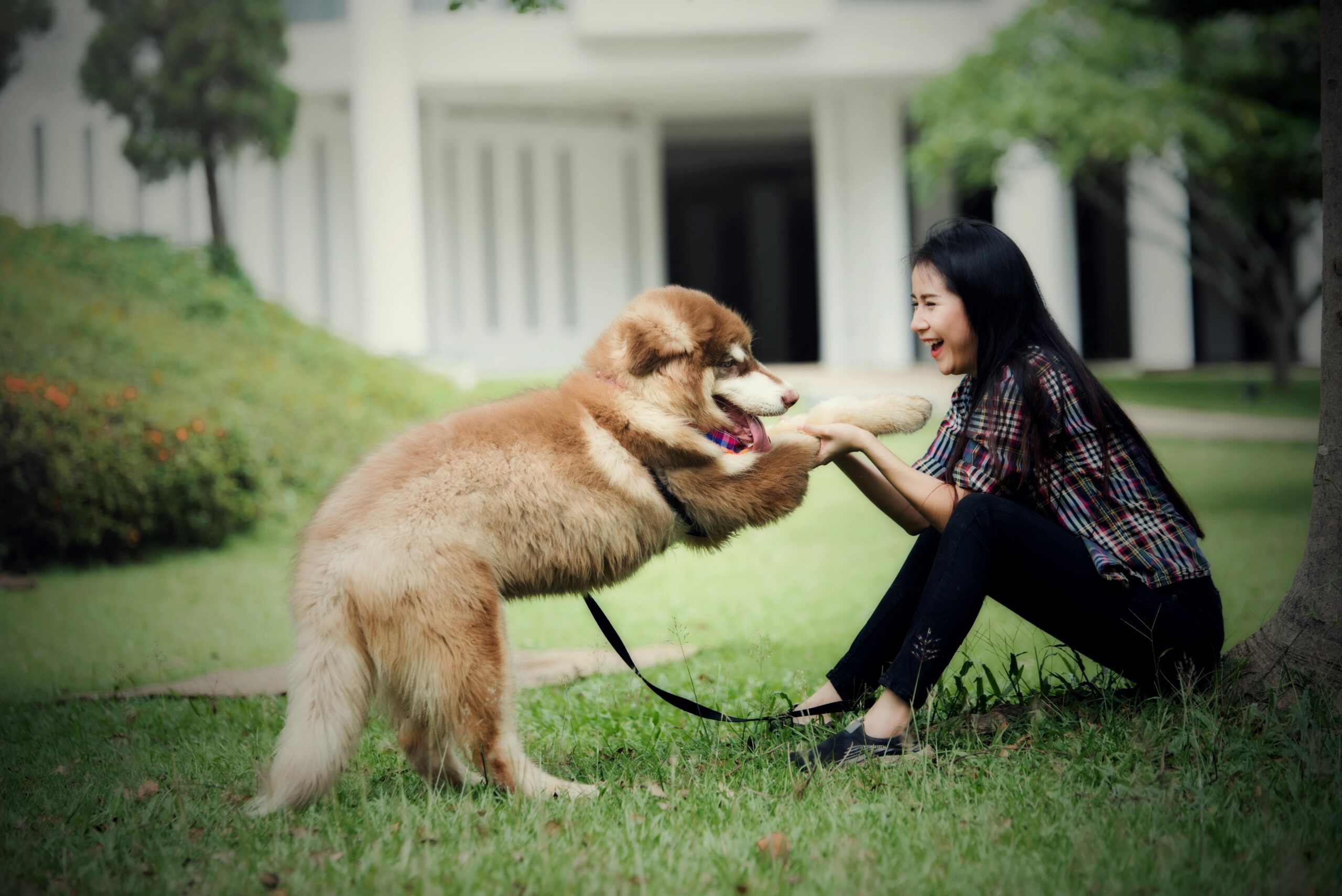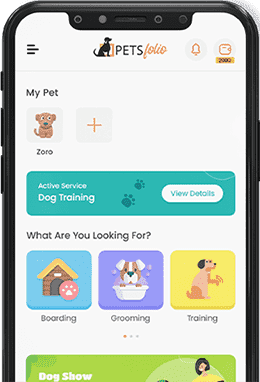How to Train Your Dog Around Guests – Easy Steps

Wondering how to train your dog around guests? Whether your pup gets overly excited or anxious, the right training can make visits stress-free for everyone. For all of us, it was just that moment when we were so excited to host family or friends at home, but the dogs jumped up and barked or maybe even licked them into awkward corners. As if trained well, suddenly, all their training goes down the drain. Well, you can’t blame them because they suddenly get so excited about visitors. But instead, it doesn’t have to be a disastrous ending for every guest visit. A little patience and training can help transform him into a great guest salutation, minus jump scares and messy puddles of drool.
Understand the Chaos: Why Dogs Act Out Around Guests

Let’s understand why dogs behave like this in the first place. That is, generally, excitement, a little bit of curiosity and also some nerves mixed when your dog sees a new face. Some view guests as new playmates and immediately jump on top of them, licking like a mad dog, while others prefer to put the defensive style- bark very loudly, even growling to protect their territory. You need not be afraid. Just because your dog is flooded by too many new faces doesn’t mean they cannot be trained into a well-mannered puppy near guests. You’ve got this! Research from the University of Pennsylvania identifies the pivotal role in aggression management played by non-aversive methods of training. A study conducted by the university showed that confrontation training techniques, including those of punishment and intimidation, often resulted in increased aggression in the dog.
(Source: ScienceDaily )
If you’re looking for help, consider consulting experts offering dog training near you or specialized services such as dog training in your local area to assist you in managing these behaviours.
Pet Training Tips That Calm and Condition Your Pet Around Guests

We know you have a busy schedule and time is at a premium, but if you want to have a dog that behaves reasonably well, you spend some time teaching him a few basic tricks. Fortunately, these training tricks don’t require any special gear or hours of protracted lessons. With a bit of practice and consistency, your dog will soon be able to greet guests in a calm, controlled manner.
1. Start Early with Basic Commands: If your dog is still a pup, you’ve got the advantage of starting early. Training your dog on basic commands like “sit,” “stay,” and “down” is crucial for managing their behaviour. These commands not only give your dog structure but also help you gain control when you need it most.
- Sit Command: This is a game-changer for excitable dogs. When guests arrive, ask your dog to sit before opening the door. If your dog remains in the seated position, immediately offer a treat to positively reinforce the desired behaviour. This simple act reinforces calm behaviour when new people are around.
- Stay Command: This one can be tricky for super energetic dogs, but it’s worth it. When the doorbell rings or guests come in, tell your dog to stay in a certain place (like the hallway or their bed). This is so that your dog understands that whatever happens near them, they must remain calm.
- Down Command: This command is required for getting your dog to relax on the ground. A big plus when your dog tends to get very excited around plenty of people.
2. Practice Makes Perfect: One or two sessions might lead you to think that the training is over, but alas, dogs need practice! The key to success is consistency and patience—with oneself and with the hound. Repetition of commands will reinforce good behaviour.
Try this:
Before guests arrive, practice the “sit” or “stay” commands when you’re alone or with family members. Then, add distractions like ringing the doorbell or knocking on the door. Slowly, your dog will learn that staying calm and seated is what earns the rewards.
3. Gradual Exposure, Don’t Rush It: If your dog is already used to reacting a certain way when guests arrive, you need to take it slow. Gradually introduce them to the idea of being calm when visitors arrive. Start by having a family member ring the doorbell while you practice the “stay” command. Over time, add more complexity by having guests come in, and see how your dog reacts. It’s all about building up their tolerance to new situations without overwhelming them. So, it doesn’t happen just like that after a single training session! Remember, teaching your dog self-restraint takes time but it is worth it in the end. Professional trainers specialising in dog training at home or in your local area can also assist.
4. Treats: The Motivation: This is a reward-oriented thing; dogs are very food-oriented animals and using treats to motivate is one of the simplest ways to work with them. Of course, if the dog sits or stays as expected, give them a treat so that they develop positive reinforcement, meaning the dog attaches to the behaviours.
Pro Tip: Consider using high-value training treats, such as little chunks of cheese, tiny pieces of cooked chicken, or even some special treat that your dog doesn’t usually get. It just makes it even more fun for them and keeps them glued. Don’t expect a miracle after one training session! Remember, training a dog to remain composed takes time, but the result is well worth it.
5. Give Them a Break: Training isn’t all about strict commands and expectations. Your pet sometimes just needs a break from everything – especially when it feels like it might be going a little crazy or having anxiety issues. If your pet seems to be developing some hurtful or too severe stress on guests, it’s time for them to have a little quiet time in a room where they can soothe themselves, regain their composure, and make everything feel better.
6. Socialise Your Dog: One of the best ways to prepare your dog for meeting new people is to expose them to different environments and individuals. Taking your pooch to dog parks and puppy classes, or good-old-fashioned playdates with other canines should help to get your pup more familiar with foreign faces and experiences. Socialization helps dogs become more adaptable to different situations, reducing anxiety when new people come around.
7. Set Up a ‘Welcome Zone’ for Your Dog : If your dog is particularly jumpy or reactive around guests, create a designated space for them to go when visitors arrive. This could be a cosy bed in a quiet corner or a crate where they feel safe. This not only gives your dog a personal space to relax but also allows guests to settle in without worrying about the dog’s overzealous greetings.
Further research has emphasized the significance of understanding the emotional impact of training techniques. Studies published in journals like PLOS ONE found that aversive-based training, which may involve shock collars or physical punishment, can increase stress and anxiety in dogs. These negative emotions can extend beyond training sessions, affecting the dog’s overall welfare.
(Source: PLOS)
Things that Should Not Be Done: Not Such a Mistake
It teaches you how to train dogs around guests; now let’s see what not to do. Sometimes, pet owners with the best intentions err inadvertently, reinforcing bad behavior in their pets while doing so.
- Don’t Ignore Bad Behavior: When your dog jumps or barks at guests, don’t ignore the behaviour or treat it as funny and give your dog some loving attention. This encourages the behaviour, leading the dog to assume that this is normal. It would be best to ask for a sit or stay calm and reward for any compliance.
- Do not over-excite the Dog: Too much excitement can sometimes lead to an overstimulated dog. Keep calm for all things around the time friends arrive, and try to avoid exuberance when greeting them because that only causes it to become more worked up.
Conclusion: The Key to a Happy Guest Interaction
It’s a process that takes time and consistency: the training of your dog to maintain a calm demeanour when guests are around. It involves basic commands along with controlled exposure to real-life scenarios so that your pup feels more at ease when faced with the prospects of social interaction. Remember, no dog is perfect, and change does not come overnight. Fortunately, following these simple training tips will set you on the path of a dog who greets visitors with the utmost aplomb. Next time you invite friends over, you’ll secretly enjoy their company while not worrying about your dog turning the occasion into a circus. And hey, with a little effort, you might even become the pet parent of the year for having a well-behaved pup!
For more tips on training, pet care, and everything in between, visit Petsfolio and keep your furry friends happy and healthy.
Reference :
Send us a Message
Enjoy this post?
Check out some more great articles and other content.
When you walk your dog, you are engaging in constant non-verbal communication through...
Read The ArticleDog grooming myths in India are still widely believed, and this affects how pet paren...
Read The ArticleWhen a dog stops eating, it is one of the worst things that can happen to any pet own...
Read The Article
 Download App
Download App Join
Join Support
Support












